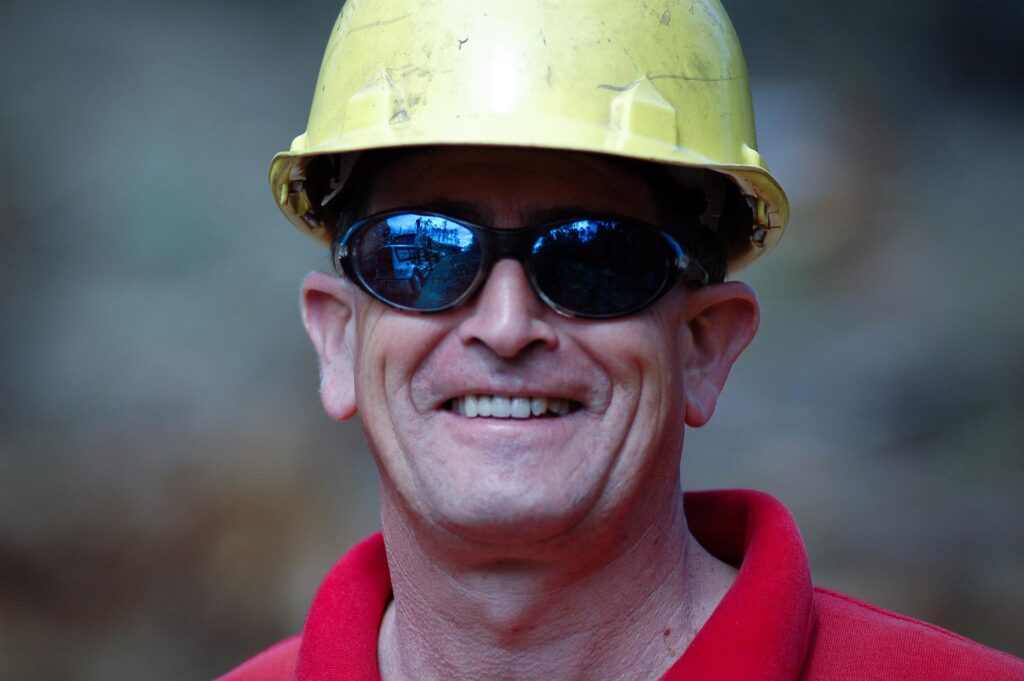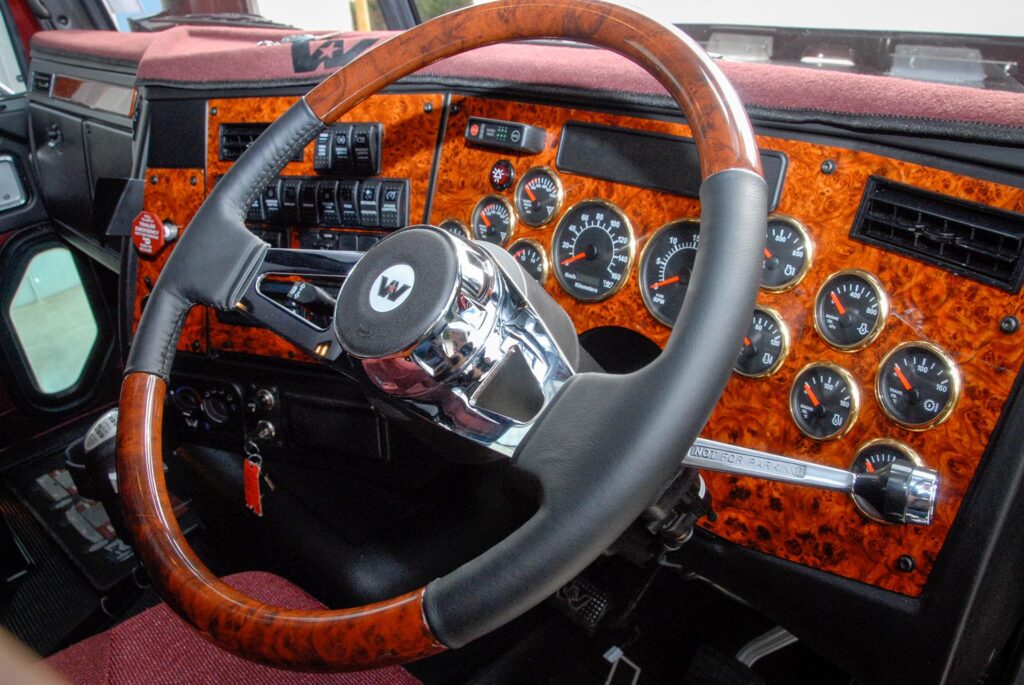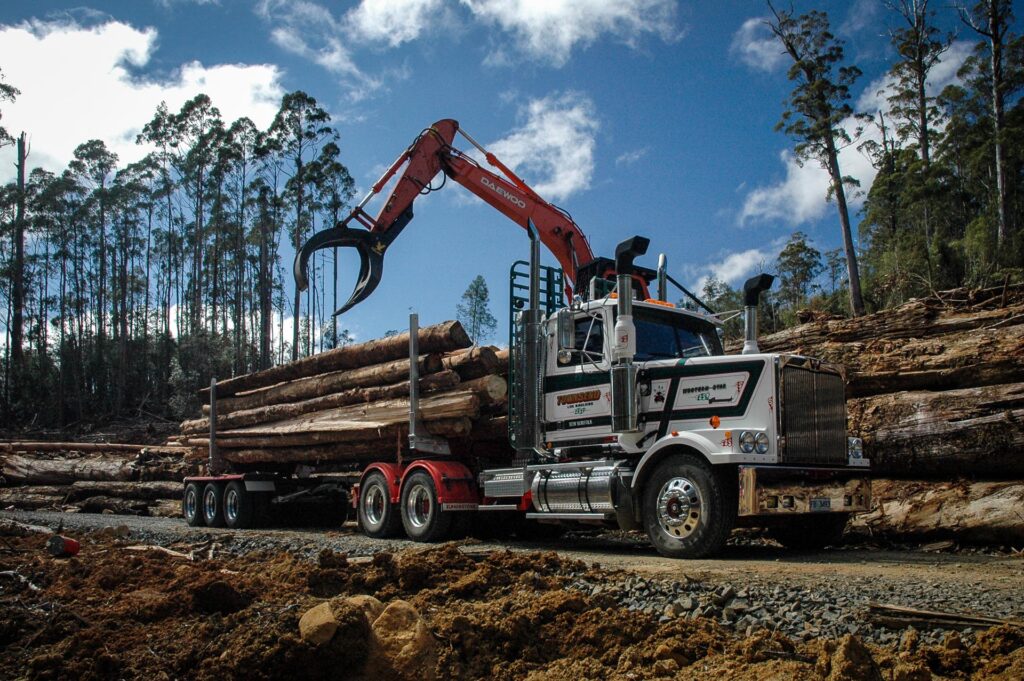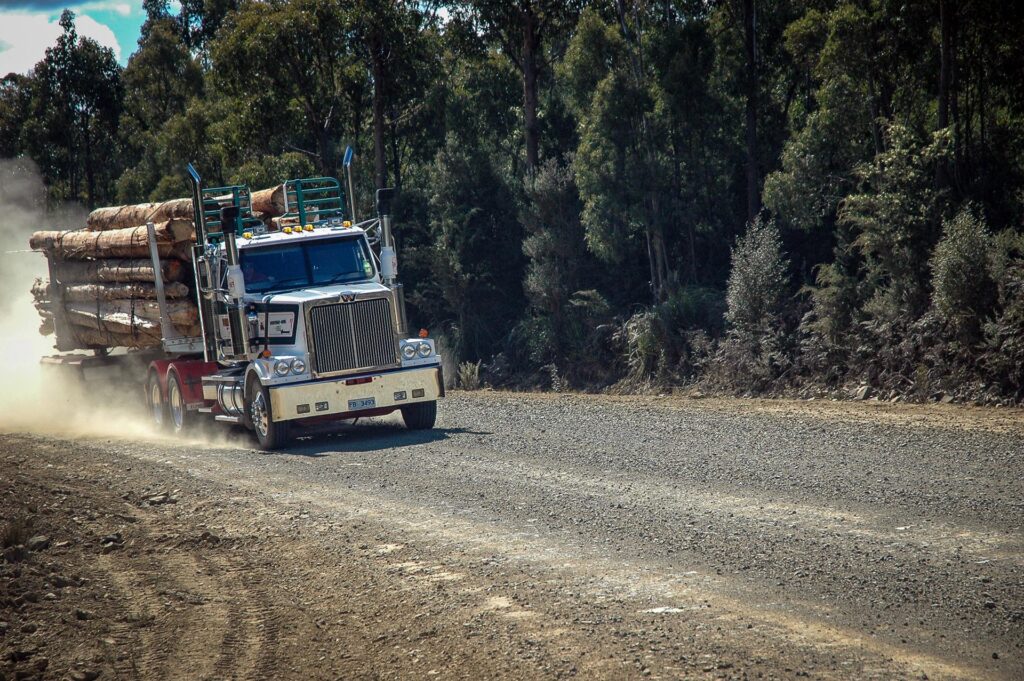Inevitably when you hear about logging controversy and the last stand of tall timber in the world, there’s a fair chance you’ll be hearing about the Southern Forests region of Tasmania. Howard Shanks joined Lester Townsend on his regular run into the Deep South.

Lester Townsend
The chilling arctic winds that often pound the southern tip of Tasmania had subsided. The Derwent River shimmered in the morning sun as Lester Townsend guided his 4900 Western Star Constellation up the Southern Outlet southbound out of Hobart. Unfortunately, the easy-going scenic ride on the bitumen would be short-lived. Approximately 40 kilometres to the south at Huonville, Lester would take a right-hand turn and head deep into the southern forests of the Florentine valley, where the road deteriorates dramatically the deeper into the mountains we’d go.
Lester’s lived in the area all his life and has been logging for most of it. This truck is his second Western Star and (at the time of writing) had a little over 12 months of bush work under its belt. Lester admits he’s more than happy with the Star’s performance, ride and reliability.
The heart of this 4900 Western Star is a Cummins’ Signature’ rated at 600 horsepower coupled to an Eaton (2050lb) 18-speed transmission that drives Meritor RT46-160 rear axles riding on an Airliner suspension.
“The engine braking on this Cummins is really magnificent, Lester volunteered. “That’s pretty important in this country, and it makes a considerable saving to the life of your service brakes,” he adds.
 The list of standard equipment on Lester’s 4900 reads like an optional extras list on other brands. It includes such items as a leather-wrapped steering wheel, chrome finish door handles, dual Hadley air horns, dual six-inch convex mirrors mounted below heated twin West Coast stainless steel door mounted mirrors and twin stainless air cleaners.
The list of standard equipment on Lester’s 4900 reads like an optional extras list on other brands. It includes such items as a leather-wrapped steering wheel, chrome finish door handles, dual Hadley air horns, dual six-inch convex mirrors mounted below heated twin West Coast stainless steel door mounted mirrors and twin stainless air cleaners.
“The trailer is a locally made Chivers jinker that was on my older trucks,” Lester explained. “I converted it from a steel spring suspension to airbags a while back, and with the full rig on airbags, I average around 31-tonne payload, so it’s a pretty good set up all round considering the unit is reasonably heavy-duty specked.”
The ride was smooth and quiet inside the wide Constellation cabin, and the muffled soothing hummin’ of the Cummins out under the bonnet was barely noticeable, which made having a conversation easy.
Lester’s local knowledge is one of pride that encompasses his community, job and sustainability. He told us that logging in the Huon area commenced as early as the 1800s, along with whaling, where the workers would set up temporary camps.
However, it is thought that the first white man to settle permanently in the area was a ‘bolter’, an escaped convict, who was found by timber getters in the early 1820s. The man, known only Martin, had built a primitive camp in the surrounding bush. The district began to develop in the 1840s and 1850s when both apples and hops were grown and still are to this day.
“In recent times, the introduction of Atlantic salmon farms has bought new industry to the area, and these fish are exported all over the world,” Lester added.
 The airliner suspension was really getting a thorough workout as the corrugations in the road deepened the further up the mountains the Western Star travelled. But, from inside the cabin, the only indication the road had deteriorated was the odd rattle from the Jinker’s chocks on the back.
The airliner suspension was really getting a thorough workout as the corrugations in the road deepened the further up the mountains the Western Star travelled. But, from inside the cabin, the only indication the road had deteriorated was the odd rattle from the Jinker’s chocks on the back.
“This Western Star is a well-put-together unit,” Lester volunteered. “Performance-wise, I can’t fault this Cummins. It’s really got all its 600 horses working when I need it.”
Lester concedes the ride and handling of this 4900 Western Star are the best he’s ever had. The ease with which Lester piloted the 4900 along the winding, twisting logging road only reiterated his comments on the superior ride and handling of the Constellation.
The ever changing countryside transformed corner after corner till eventually, either side of the road became lined with thick rows of tall trees. “They’re what they call swamp gums”, Lester enlightened. “They are one of the softer hardwoods and are mostly used for producing veneer panelling.”
“You can see here in this clearing where they have logged this small coupe and are ready to replant it,” Lester explained, pointing out the windscreen a few corners further up the road. That next patch of bush or coupe is left untouched, which provides a habitat for the native animals. Scenery wise, it also means the mountains are not barren, like where they clear fell pine forests.”
 Over the next few kilometres, Lester could point out some examples of sustainable forest harvesting. “These coupes were harvested only five or so years back,” Lester pointed out. “Around the next bend, it was harvested ten years ago. However, the rapid growth of these trees makes it extremely hard to tell where harvesting has taken place after only a decade of growth.”
Over the next few kilometres, Lester could point out some examples of sustainable forest harvesting. “These coupes were harvested only five or so years back,” Lester pointed out. “Around the next bend, it was harvested ten years ago. However, the rapid growth of these trees makes it extremely hard to tell where harvesting has taken place after only a decade of growth.”
“These gums planted here are a fast-growing eucalypt tree that the forestry has developed specifically for the industry. So it is not a scene of destruction but a renewable resource we have here,” Lester emphasised.
Like many loggers down this way, Lester gets a little annoyed when the community gets misled with reports about how logging is destroying the forests. Furthermore, he also has little time for small-minded, misinformed people who block the entrances to logging coupes and vandalise machinery claiming everything as the last tall timber stand.
“This is the third time this area has been logged,” Lester pointed out. “There has been a real evolution in how timber gets harvested and forests managed over the last four to five decades. The evolution Lester spoke about is quickly evident when you walk around parts of the coupe and notice the old taller stumps where axemen would cut shoe holes in the tree truck for their planks. The advent of motorised chainsaws certainly improved productivity. Trees are now cut at ground level, so the stump height is lowered.
“Some of them can’t see the wood for the trees,” Lester mused, referring to the extremist minority.
 The UHF radio in the overhead console crackled into life with a call from the bush crew checking on Lester’s progress. “I’ll start heading down to the landing,” came the reply after Lester informed them of his position. “Just coming in around spur three”. Sure enough, around a few more corners and a plume of dust rose from the ridge as the excavator made its way down to the large stacks of logs neatly sorted on the bank’s side.
The UHF radio in the overhead console crackled into life with a call from the bush crew checking on Lester’s progress. “I’ll start heading down to the landing,” came the reply after Lester informed them of his position. “Just coming in around spur three”. Sure enough, around a few more corners and a plume of dust rose from the ridge as the excavator made its way down to the large stacks of logs neatly sorted on the bank’s side.
Lester eased off the throttle, nosed the Western Star into a small clearing, waited for the dust to clear, then selected reverse and backed alongside the log stacks. There were a couple of chains on the Jinker pole to undo, and then it slowly rolled off onto the ground. Lester selected low, eased out the clutch and stretched out the pole.
There was time for a quick chat with the excavator driver, and then the machine’s large arm with its mechanical beak began clasping logs and gently placing them between the poles of the Jinker. Like most log trucks down this way, Lester’s truck is equipped with Elphinstone onboard scales so that the Lester can accurately load to the maximum weight.
Interestingly enough is how accurate they load the logs. As the load is near completion, Lester monitors his handheld readout and signals the excavator driver how much weight is over each axle group. Then, the machine operator can grab a log and shift it forward or rearward to achieve the correct weight over each axle group. It takes approximately half an hour to load the logs onto the truck when everything goes to plan.
Lester admits that logging is an excellent industry to be in, although he cites it as a harsh industry at times.
 A loud swoosh of air gushing from the Western Star’s spring brakes signalled it was time to get these logs on the road. The big-bore Cummins under the hood bit hard, and the tyres gnawed through the dust, searching for traction in the soft powdery dirt track. Lester, his 4900 Constellation Western Star and 31 tonnes of logs slowly moved out of the landing.
A loud swoosh of air gushing from the Western Star’s spring brakes signalled it was time to get these logs on the road. The big-bore Cummins under the hood bit hard, and the tyres gnawed through the dust, searching for traction in the soft powdery dirt track. Lester, his 4900 Constellation Western Star and 31 tonnes of logs slowly moved out of the landing.
It would be another three and half hours before Lester would reach the mill, a journey that would take him right to the heart of Hobart and up the state’s East Coast, but that’s another story.





